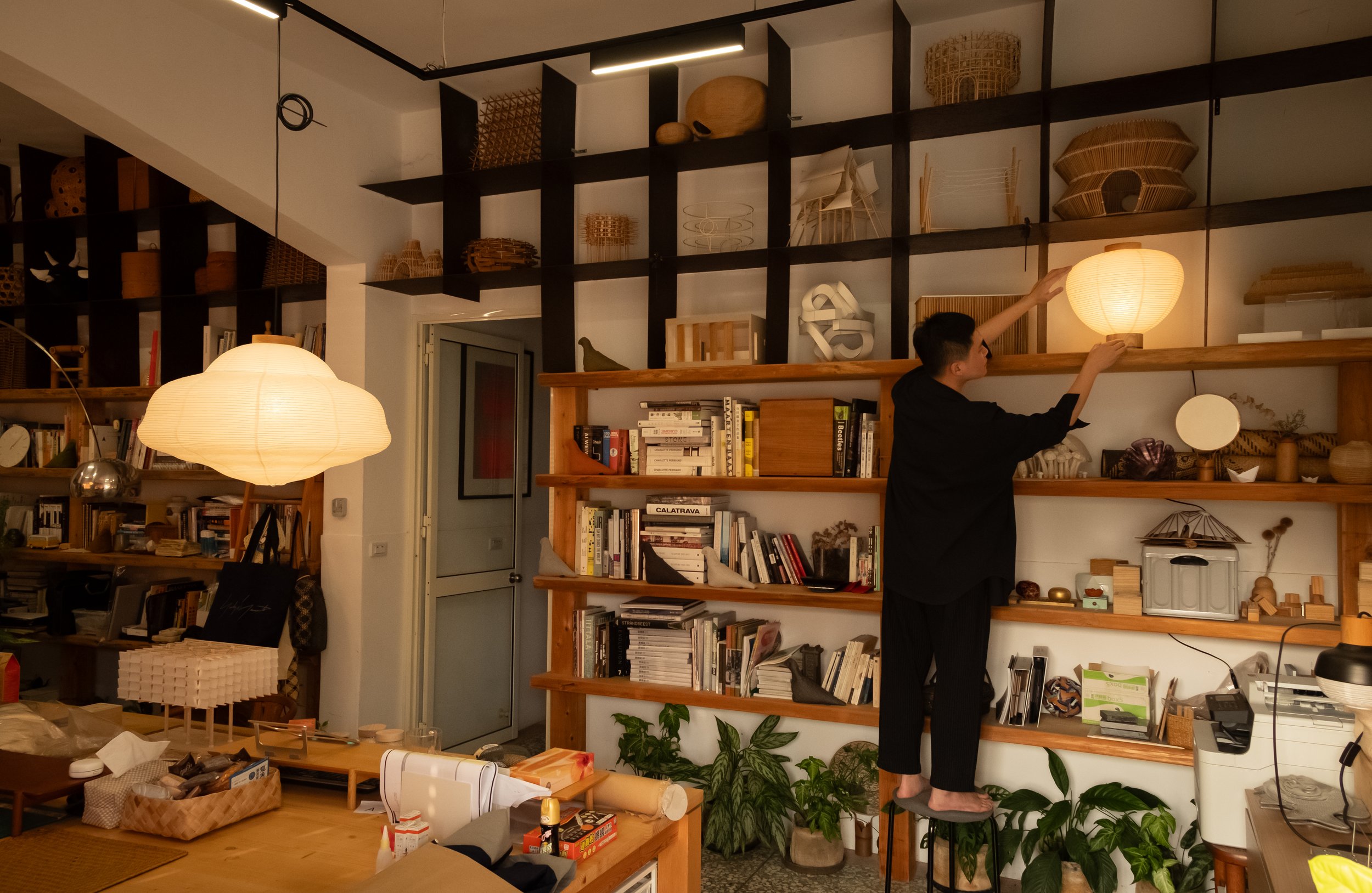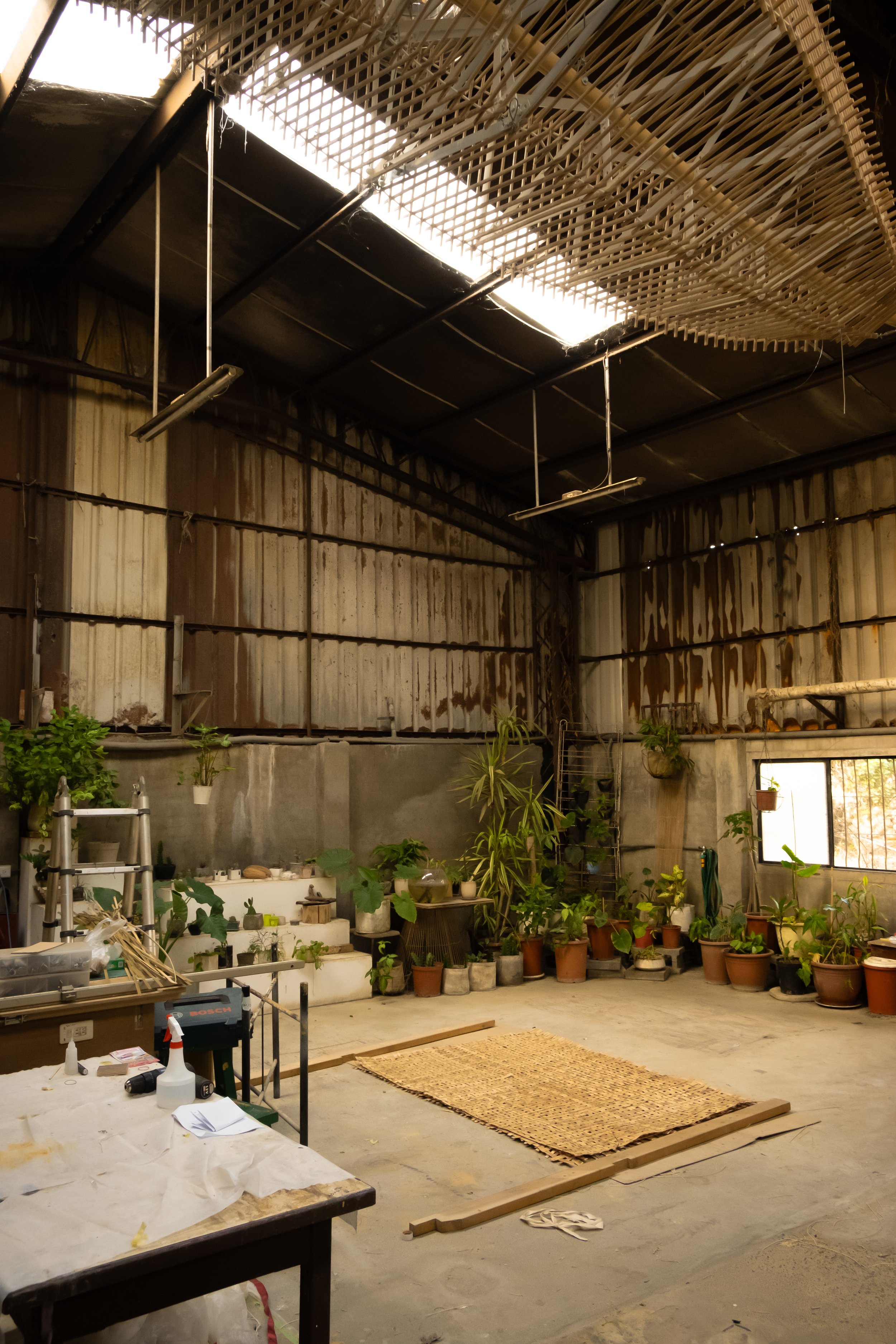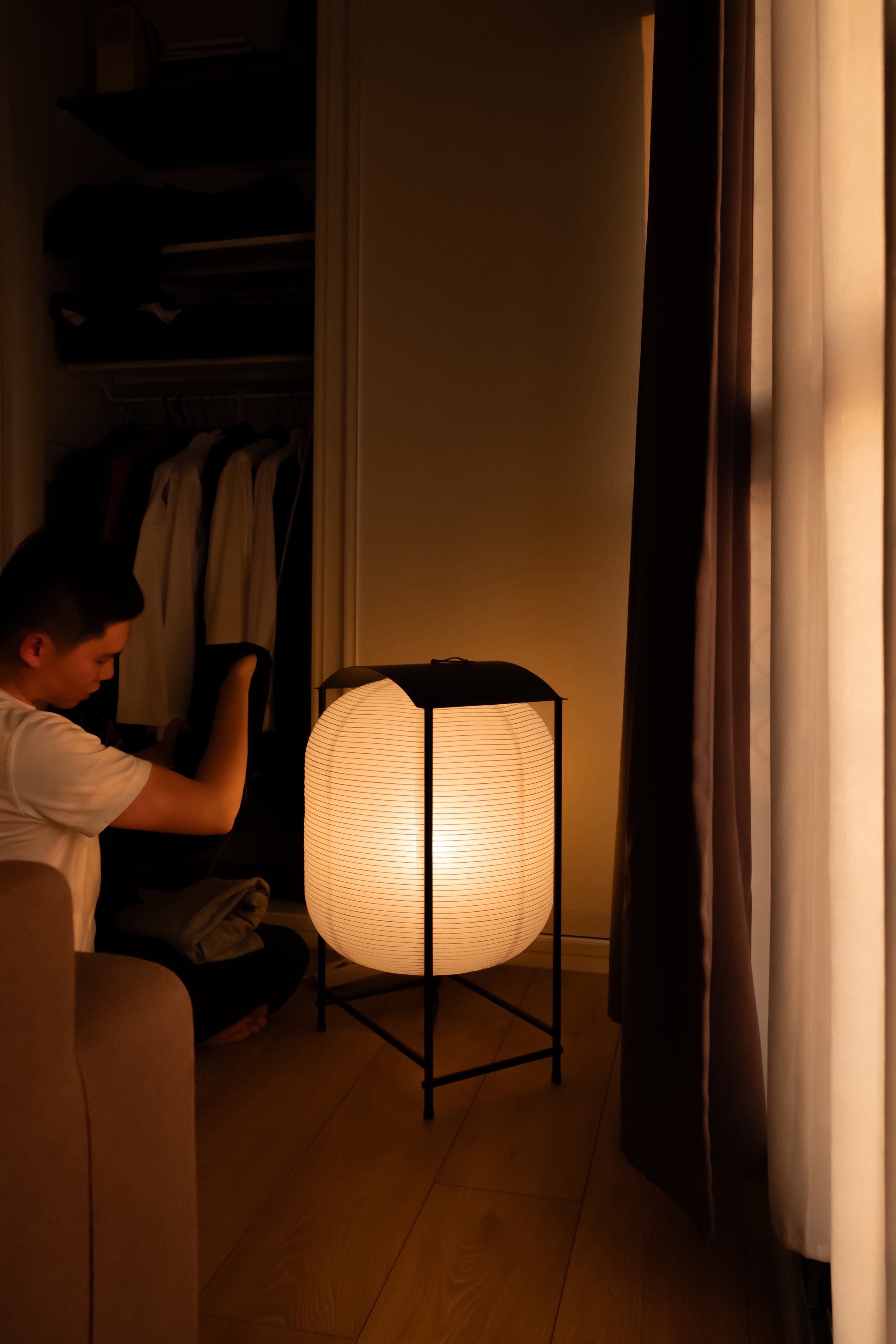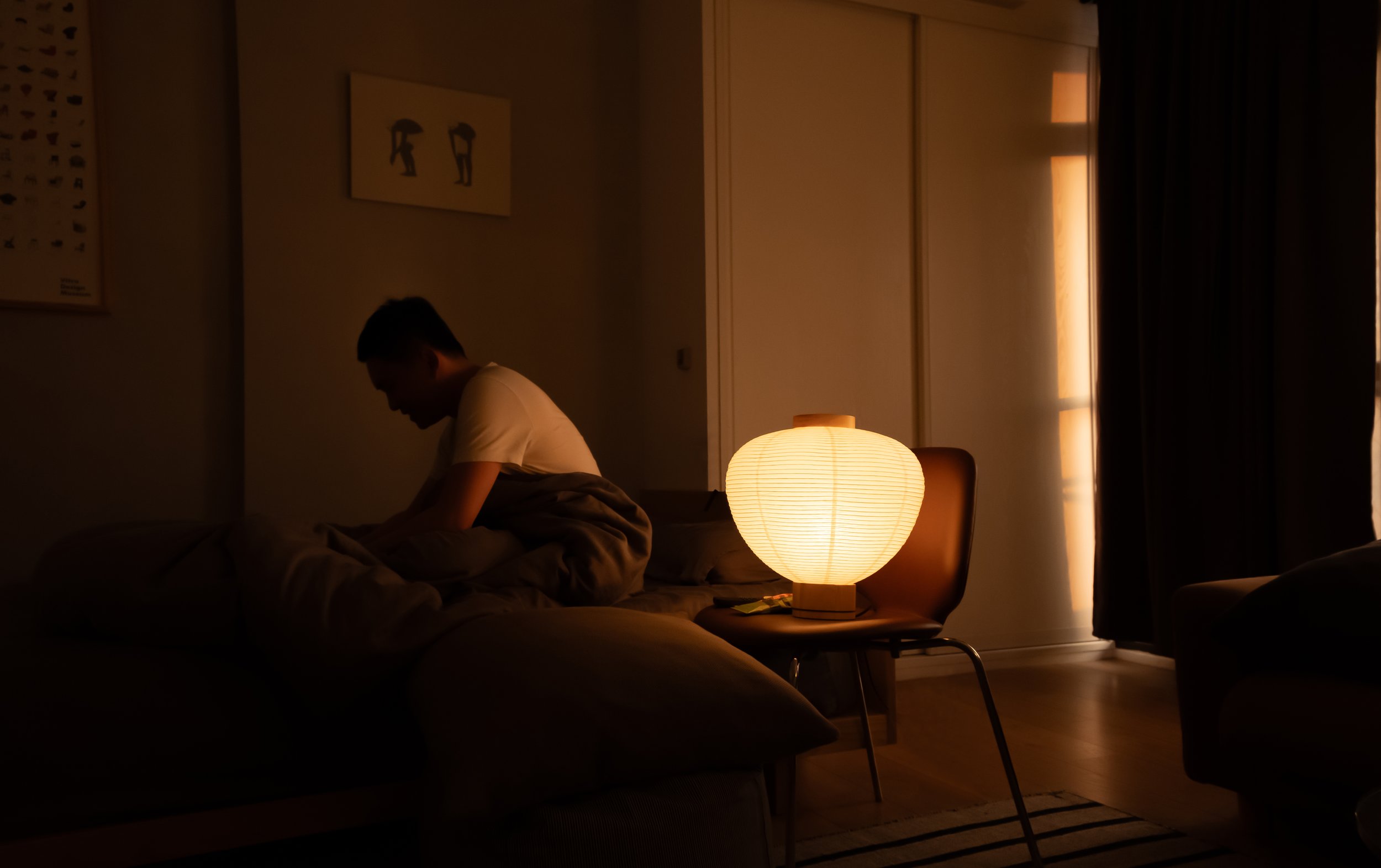
Artist Cheng Tsung Feng
Text:KIMU design |Photography:Kelly Lin
The ethereal interplay of light and shadow, with its vague shapes and edges, has always been an impression that KIMU strives to capture through their works. Five years ago, KIMU's lighting entered the life of the artist Cheng Tsung Feng. This time, we rendezvoused with light as we visited his studio nestled in Caotun, Nantou. In addition to sharing our creative journeys and life experiences over the years, we also delved into his perspective on KIMU.


Design Craftsmanship Art
If we were to define Cheng Tsung Feng and his studio, we cannot overlook the influences and nutrients brought by the realms of design, craftsmanship, and art in his creative journey.
As his works evolved from small-scale furniture and home décor to large-scale sculptures and outdoor installations, traversing materials, domains, and even international communication across different languages and cultures has become a daily routine for his studio. The logical thinking and communication skills cultivated from his background in industrial design serve as the foundation for their creative process. Additionally, design has nurtured Cheng Tsung Feng's ability to deconstruct and appreciate the intricacies of form, color, material, and process within an object, allowing him to admire the beauty in details. He particularly cites the Marvel movie "Black Panther 2" as an example, stating, "Although I didn't quite fancy the script or the performances of the main actors, the art direction and soundtrack were among the most captivating in the Marvel series." Design has enhanced his way of viewing, inevitably influencing his creative vocabulary to a certain extent.
In contrast to the logic and rationality instilled by design, Cheng Tsung Feng perceives craftsmanship as the emotive charm of cultural heritage. Craftsmanship carries the essence of time, being the culmination of countless anonymous artisans' inventions and teachings throughout history. Often associated with hand craftsmanship and natural materials, it embodies values of sustainability, appreciation, and love for materials. For him, the most enchanting aspect of craftsmanship lies in the visible manufacturing messages embedded within. He illustrates, "Take a smartphone, for example, it comprises countless intricate components, and I feel like a person navigating through a maze. I find it challenging to discern the clear production and material information present in handmade products."
However, handmade objects often exude a similar aura and value system, brimming with readable traces: the origins of materials, people's involvement in production, how they are utilized, and how damages can be repaired, among others. The accumulation of these processes forms the culture of a place, an era, or a brand, endowing these objects with charm and familiarity. "In handmade objects, I see verbs: carving, stitching, weaving, polishing, etc. The manufacturing methods are often transparent, allowing us the opportunity to locally repair them, thus prolonging their lifespan."
In art, I learn to embrace and appreciate various individuals and possibilities, broadening my acceptance in various aspects. Sometimes, I even intentionally approach and engage with people or things that initially made me feel uneasy or uncomfortable, realizing the importance and beauty of subjectivity. It emboldens me to be more adventurous and daring in my endeavors, influencing many of my judgments and decisions," he mentions. "In the learning process of design and craftsmanship, I often felt the presence of a model value system and direction," but through exposure to art, appreciation, and creation, I feel more at ease and liberated. The pursuit of that ideal value seems to diminish somewhat, as if it encourages greater freedom, authenticity, and even capriciousness in making choices at various times, even if sometimes not trusted or understood by the majority. Perhaps this is why, despite maintaining a consistent creative context, he always manages to bring different perspectives and possibilities.
Light is an expression.
"Before my first collaboration with a lighting designer, I always considered commissioning someone to design the lighting for my works a distant possibility." Although light has always been a concern for Cheng Tsung Feng during the creative process, it wasn't until he collaborated with professional lighting designers that he truly appreciated the magic of light.
Throughout the creative process, Cheng Tsung Feng envisions a certain temperament for each of his works. He believes that besides the arrangement of the forms, colors, materials, and spatial experiences within the artwork itself, the addition of light, whether it's the natural sunlight casting different shadows during the day or the skillful artificial lighting enhancing the dramatic atmosphere at night, plays a crucial role in directly connecting with people's emotions. In the complementary interplay between the artwork and light, the ineffable feelings he wishes to convey are fully expressed. "Many of my creations are placed outdoors, where sunlight illuminates them from various angles, creating different light and shadow patterns as time progresses. Artificial lighting at night strategically enters the artwork, adding a more dynamic atmosphere. Whether it's natural or artificial light, it indeed allows my works to showcase their expressions more vividly."
During the interview, Cheng Tsung Feng often hinted at his love for film and television culture. He had previously wished to participate in the creation of film and television art, concert stages, and theaters, and finally saw these dreams come true last year. This experience further deepened his understanding of the vital role light plays in various settings and forms of art. "Light and shadow complement the aspects of the work that cannot be expressed through actors, gestures, dialogue, music, costumes, makeup, or composition. The indispensable emotions are indeed conveyed through light, making light and shadow themselves compelling narrative tools."
Cheng Tsung Feng's Perspective on KIMU
In the eyes of Cheng Tsung Feng, who has known KIMU for a decade, KIMU's works have always carried an impression of Eastern aesthetics, reminding him of his past studies on the traditional forms of both Eastern and Western cultures. "Traditional Eastern objects often play a supportive role, like frames for paintings, created to enhance the message of the content itself, which differs from the often attention-seeking intentions of classical Western objects." This is also one of the reasons why KIMU's works can seamlessly integrate into various spaces. In Cheng Tsung Feng's studio, many of KIMU's works can be seen placed throughout, whether alongside his own models or used to illuminate his study filled with various collections, fitting in appropriately.
Furthermore, he also pointed out his observation of KIMU's continuous efforts. He appreciates how KIMU has been capturing the contours familiar to people, existing in memory, or even long gone, not merely evoking nostalgia but rather integrating the charming impressions of the past into everyday life, creating a unique yet understated companionship. "KIMU seems to traverse through the timeline, capturing the contours of life from the past to the present, converging into a distinctive expression."








